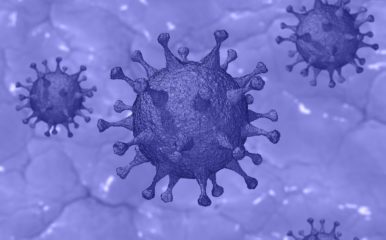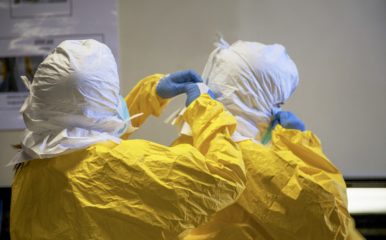
Going beyond competitive case counting
Published on 08/04/2020

PxHere
The COVID-19 pandemic demands a new approach to infectious diseases in this age of global interconnectedness. To date, our highly fragmented global political landscape has seen a startling lack of coordinated action – and the consequences are clear to all.
Over the last 30 years, one new infectious disease outbreak has followed another, with many of these emerging and spreading from wild or livestock animal sources: H5N1 avian influenza (‘bird flu’) in 1997, SARS in 2003, H1N1 swine influenza (‘swine flu’) in 2009, MERS in 2012, H7N9 avian influenza in 2013, Ebola in 2013. Each of the outbreaks preceding COVID-19 gave us an opportunity to improve our preparedness for the next. Foresighting exercises by the World Health Organization (WHO) warned of the future emergence of Disease X. Scientists and international organisations urged the global community to sustained investments in prevention efforts.
One Health
Having ignored all, global leaders must now reflect and look to the future. A functional framework for governance on global risk assessment and action based on the One Health approach recognising the interconnectivity and interdependence of animal, human and environmental health is urgently needed.
In 2010, WHO, the Food and Agriculture Organization (FAO) of the United Nations and the World Organisation for Animal Health (OIE) strengthened its ‘tripartite’ collaboration, reinforcing its offer of coordinated action to understand and prevent or mitigate health risks at the animal-human-ecosystems interface. There has also been discussion about adding UN Environment Programme (UNEP) to this group but nothing has been formalised.
In short, a truly integrated approach has yet to emerge, and any difference in the influence of individual national governments on policy needs to be minimised.
It is essential that a body such as the tripartite would not just be active during response, but also undertake responsibility for prevention and preparedness. As a priority, it needs to ensure investment in better understanding of the risk pathways that lead to disease emergence. Only once we understand these, can we design combinations of interventions that minimise the risk of human exposure.
Acceding to simplistic demands such as ‘just close wet markets’ will not work. Not only are such demands difficult to implement effectively, but they fail to understand or address the realities of the lives and livelihoods most affected. There may need to be trade-offs, for example between nutrition and public health when considering the intensification of animal production.
Science-policy interface
Any global risk governance framework must embrace a diversity of voices. Currently, the interface between science and policy is dominated by single-issue science stakeholders, most usually from the public health sector, and the pathogen remains the single focus.
But to prevent and respond more effectively, we require the wider epidemiological picture from both medical and animal health experts, important socio-economic and anthropological perspectives, and the environmental context. Prevention, preparedness and response need to be based on an interdisciplinary approach.
And the governance itself must be improved. To be able to deal with emergency response to challenges such as COVID-19 we need to do much more in preparedness and develop a more effective and reliable link between science and policy, such that any necessary high-quality knowledge can be generated rapidly via an interdisciplinary approach and be integrated into policies quickly. This will require a highly effective and very dynamic science-policy interface.
The experiences and knowledge of people affected by outbreaks must be considered too. Working collaboratively with people affected and engaging in people-centred responses can complement ‘top down’ responses and ensure more acceptable and effective responses. The experiences in the West African Ebola outbreak demonstrated this well.
Regional and global coordination is key. An infectious disease does not respect boundaries. Currently, national policies are strongly influenced by national cultural, political and public health security considerations. The stopping of global spread is neither their focus nor their priority.
Furthermore, the policies currently promoted across countries are almost impossible to implement in a way that appropriately balances disease control with livelihoods objectives anywhere other than in high-income countries. Their adverse economic and social impacts in low- and middle-income countries can be dramatic and troubling to witness. It has, for example, been heart-breaking to witness the effects of lockdown in India. The potential for more authoritarian regimes to harness lockdowns for political and repressive ends is equally troubling.
Flexible approaches
Importantly, it must also be acknowledged that disease emergence is shot through with uncertainties – not only in the epidemiology and other science, but also in the social contexts too. These uncertainties cannot all be reduced to calculable risks, and flexible approaches are key.
Finally, an effective body overseeing global risk governance under an active tripartite plus UNEP secretariat could help us move beyond the competitive case counting within and between countries we too often see. Fuelled by social and other media, as well as by a multitude of different mathematical, statistical and graphical modelling outputs, one of its effects has been the varying degrees of panic now being witnessed on a global scale.
The bottom line is that insular national and silo-ed discipline-specific efforts will not improve our ability to respond to the emergence or re-emergence of disease, COVID-19 or another. But even more importantly we need to accept as a high priority the urgent need for the global community to effectively work together to prevent and prepare for the emergence of such risks in the first place.
- The authors are all involved in global COVID-19 response efforts.


